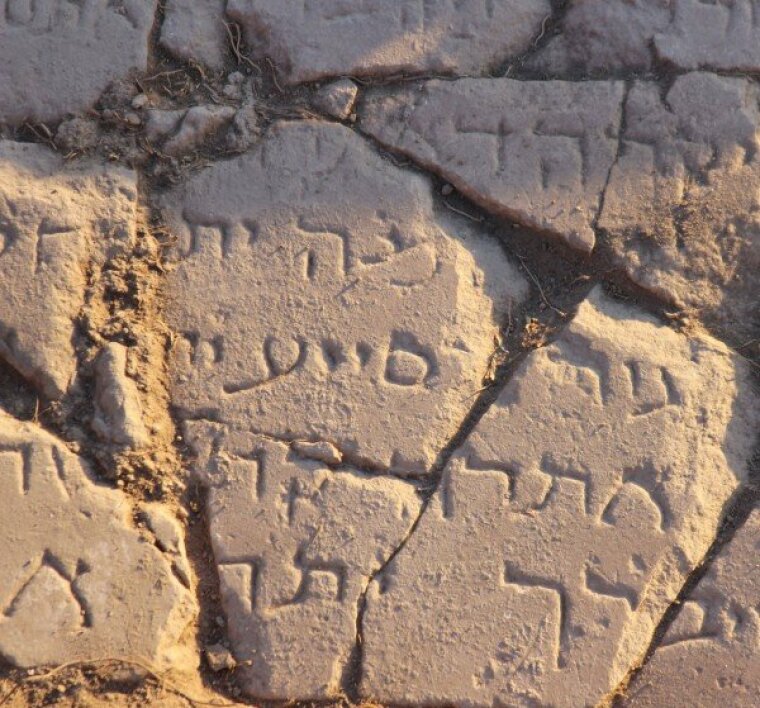Ancient marble slab may mention Mary

KURSI, Israel (Christian Examiner) – Excavating at the place associated with the exorcism of the Gerasene demoniac, archaeologists have discovered an intriguing marble slab inscribed with seven lines of Hebrew script yet to be fully translated—but which may contain a reference to Mary.
The slab, which is about 1,500 years old, affords the first proof of Jewish settlement east of the Sea of Galilee in the town of Kursi in the area of the Gerasenes, believed to be the setting of the text of Mark 5:1-20.
"There's been nothing like this before. We didn't know something like this existed."
"It is a rarity to discover proof of a Jewish presence on the eastern shores of the Sea of Galilee," said Michal Artzy, an archeology professor at the University of Haifa, to JNS.org.
The Aramaic inscription in Hebrew script indicates the town was Jewish or a mix of Jewish and Christian residents.
"Up to now, we had nothing proving that Jews settled on the lake's shores during that era, other than in the town of Migdal," Artzy said, adding that historians had supposed the town to be Jewish but now had proof.
The site of Kursi was venerated by early Christians, who eventually built a monastery there and made pilgrimages during the Byzantine period.
A CURIOUS INSCRIPTION
The marble bore the words "marmaria," "amen," "the holy king" and "the merciful," the Times of Israel reported.
The marble inscription is believed to be associated with a synagogue, perhaps bearing a common dedicatory script, according to Haggai Misgav, a Hebrew University expert in ancient inscriptions, via the Times.
University of Haifa archaeologist Haim Cohen said "marmaria" could have two meanings, a type of marble or a reference to "the rabbi of Mary."
"Mar" means rabbi; the marble could refer to Mary, Jesus' mother, or Jesus himself, though the slab is unlikely to referemce Christianity, Misgav suggested.
Writing about the significance of the site to Christians, Charles R. Page of the Jerusalem Institute for Biblical Exploration said, "This area is the first place in the Gentile world to be exposed to the teachings of Jesus. Jesus' first Gentile convert was the demoniac of Gergesa (see Matthew 8, Mark 5, Luke 8). He later became the first Christian, Gentile evangelist (Mark 8).
"Therefore, this place had and has tremendous importance for Gentile Christians," Page said on the website for the Kursi excavation project.
Excavation of the Byzantine monastery was conducted in the 1970s and again since the 2000s.
AN AMAZING FIND
Cohen said confirming a Jewish presence in Kursi was "an exceptional accomplishment."
The stone itself was also remarkable, being imported Greek marble rather than local stone or clay used for mosaics, indicating the text was of some significance.
"The dedication comprises eight lines, so that it is very detailed or expansive. In most cases we do not find so many words in Hebrew letters engraved on stone, so the person to whom the inscription was dedicated must have had a tremendous influence on the local people," Artzy said, according to Science Daily.
The excavations have yielded significant insights into the Byzantine and the earlier Jewish town, especially the marble inscription. "There is no parallel for such a detailed and expensive dedication in archeological findings to date in Israel," said Artzy.
The slab is one piece of marble about 140 cm by 70 cm (about 55 inches by 27 inches) and was found in the entrance to a building that may have been a synagogue, the science site said.
"There's been nothing like this before. We didn't know something like this existed," Cohen said.